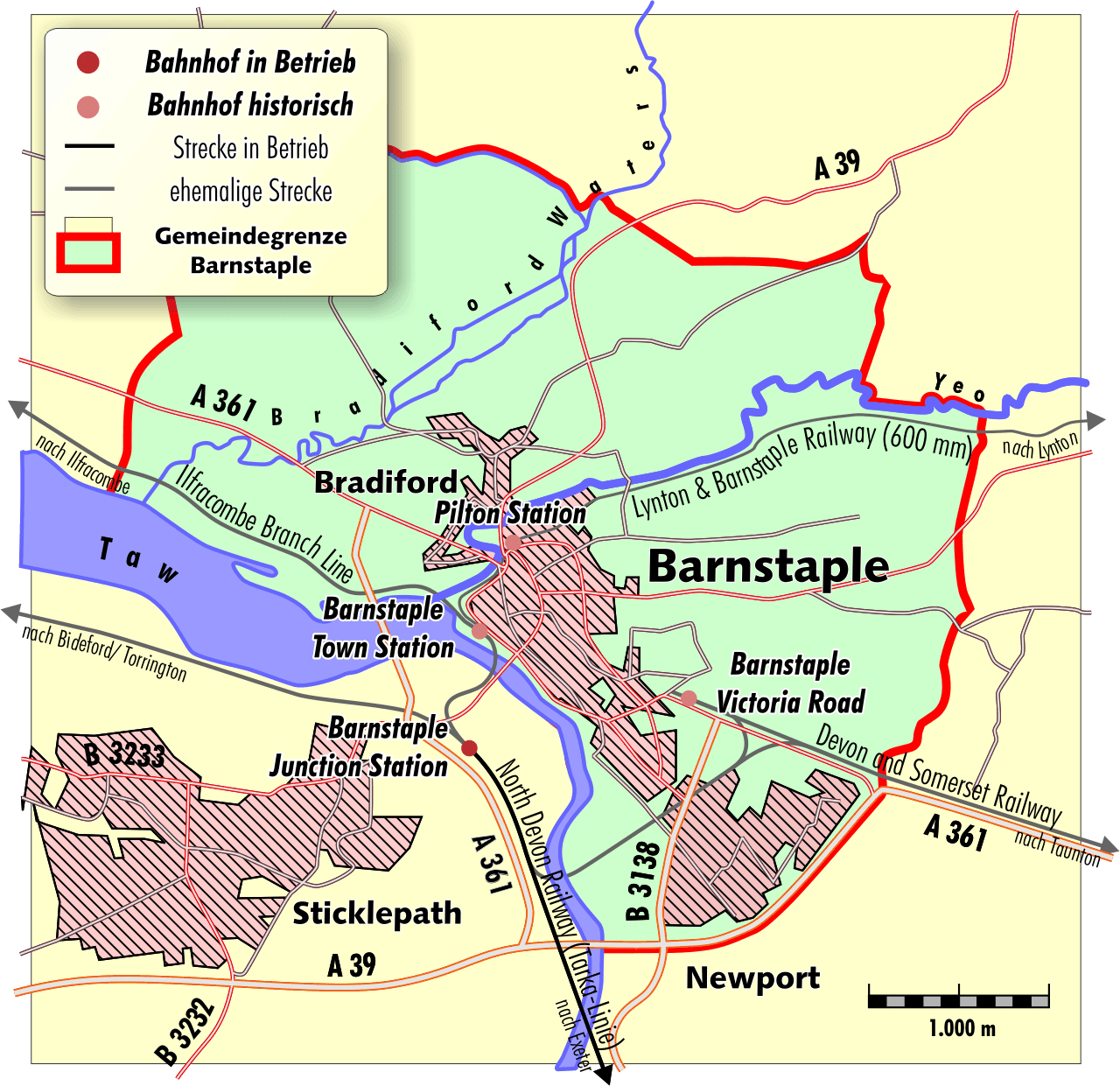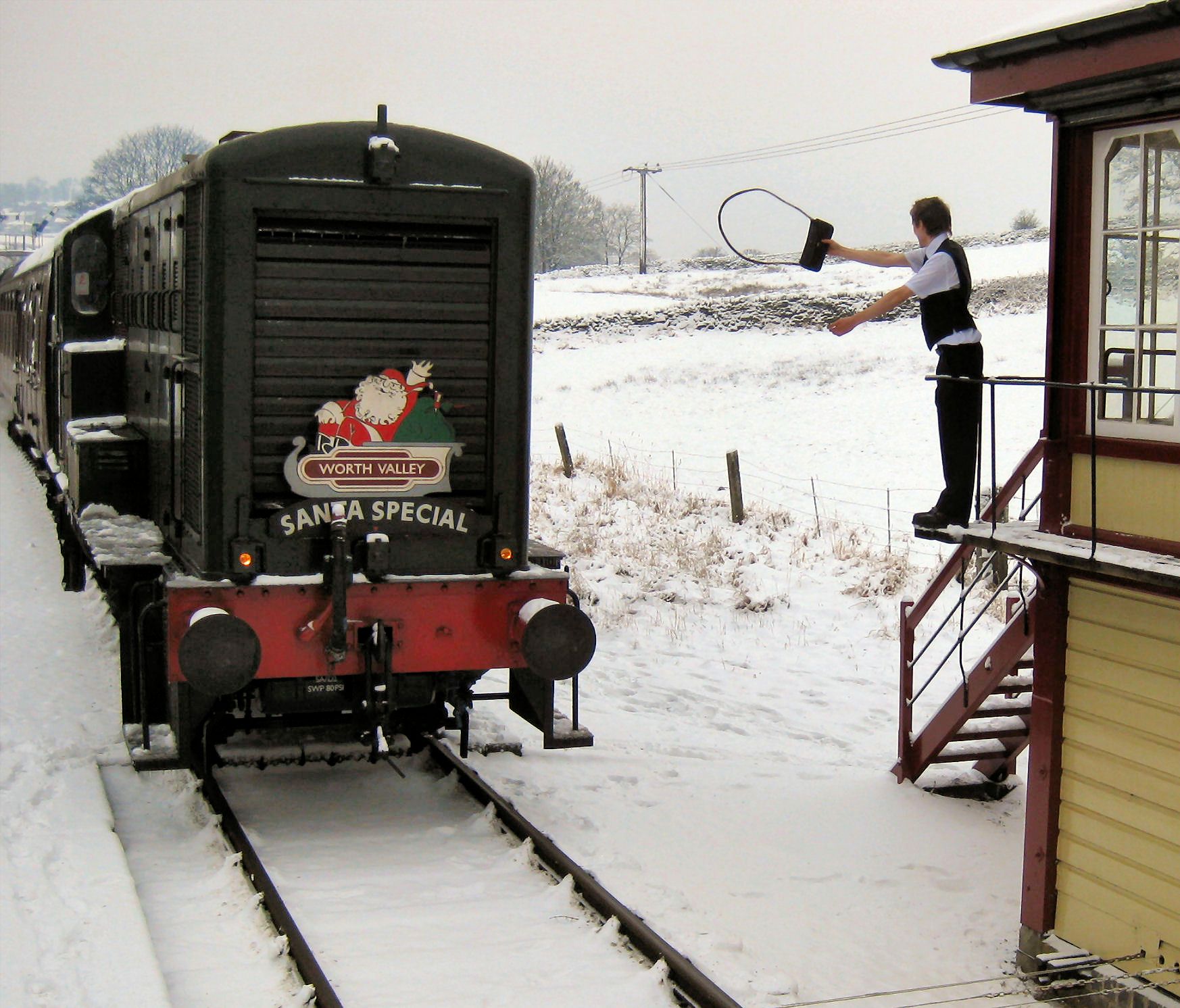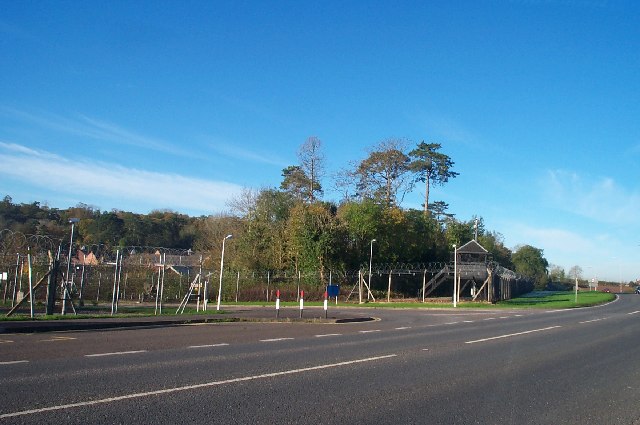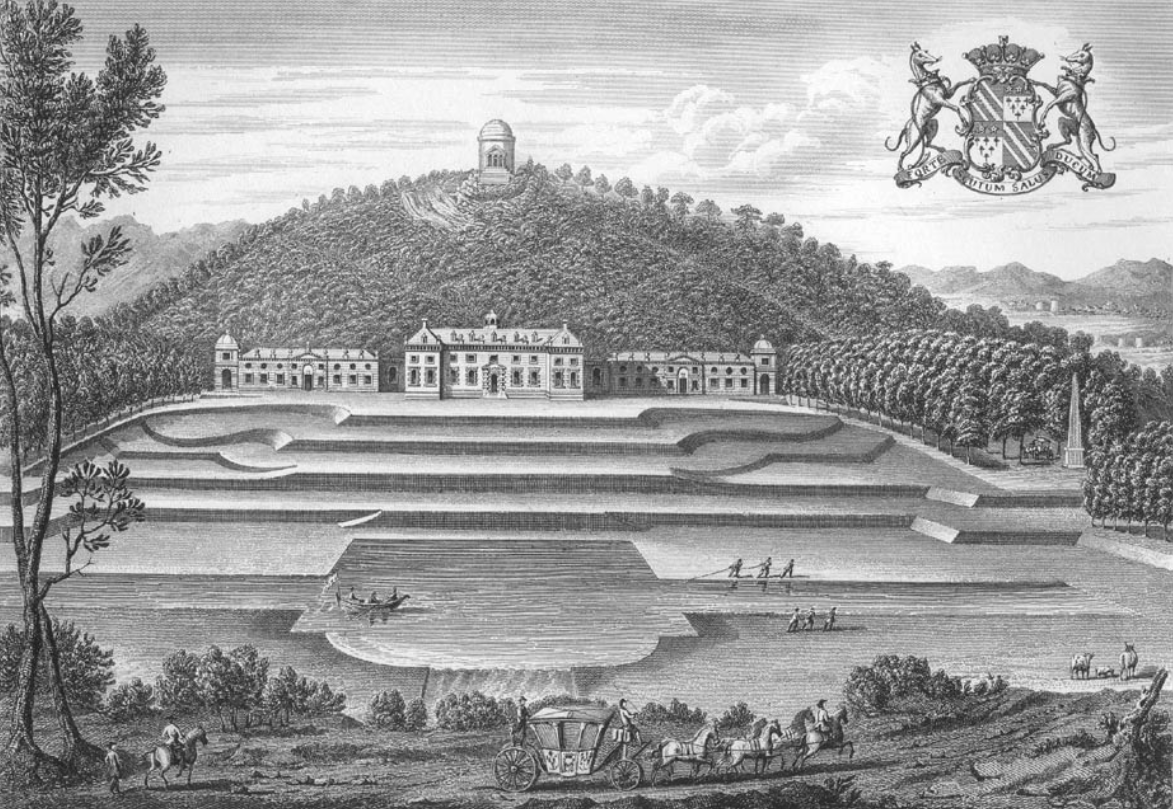|
Devon And Somerset Railway
The Devon and Somerset Railway (D&SR) was a cross-country line that connected Barnstaple in Devon, England, to the network of the Bristol and Exeter Railway (B&ER) near Taunton. It was opened in stages between 1871 and 1873 and closed in 1966. It served a mostly rural area although it carried some through services from east of Taunton to the seaside resort of Ilfracombe. From 1988 onwards the route of the line west of South Molton was redeveloped to form the part of the North Devon Link Road. History The ( 27 & 28 Vict. c. cccvii), that authorised the railway, received assent on 29 July 1864. Eugenius Birch was appointed as Engineer, but he was replaced by Richard Hassard in 1870. The first section of the line was opened on 8 June 1871, from Watchet Junction (later Norton Fitzwarren) to on the edge of Exmoor. The remaining to Barnstaple opened on 1 November 1873. The line used its own station at Barnstaple (later to be named Victoria Road), some distance from the riv ... [...More Info...] [...Related Items...] OR: [Wikipedia] [Google] [Baidu] |
Bristol And Exeter Railway
The Bristol and Exeter Railway (B&ER) was an English railway company formed to connect Bristol and Exeter. It was built on the broad gauge and its engineer was Isambard Kingdom Brunel. It opened in stages between 1841 and 1844. It was allied with the Great Western Railway (GWR), which built its main line between London and Bristol, and in time formed part of a through route between London and Cornwall. It became involved in the British Gauge War, a protracted and expensive attempt to secure territory against rival companies supported by the London and South Western Railway (LSWR) which used the narrow gauge, later referred to as ''standard gauge''. At first it contracted with the GWR for that company to work the line, avoiding the expense of acquiring locomotives, but after that arrangement expired in 1849, the B&ER operated its own line. It opened a number of branches within the general area it served: to Clevedon, Cheddar, Wells, Weston-super-Mare, Chard, Yeovil and Tiver ... [...More Info...] [...Related Items...] OR: [Wikipedia] [Google] [Baidu] |
Token (railway Signalling)
In railway signalling, a token is a physical object which a train driver is required to have or see before entering onto a particular section of single track. The token is clearly endorsed with the names of the section to which it belongs. A token system is more commonly used for single lines because of the greater risk of collision in the event of a mistake being made by a signaller or traincrew than on double lines. Principle The operation of a bidirectional single track line has the hazard of two trains colliding. The simplest way to prevent such collisions is to have only one train in the section at any given time. Such a system is known as "one-engine-in-steam” (OES) or “one-train working" (OTW). This system is used on some branches of rail networks, and on heritage railways. The main disadvantage is that it restricts the number of train movements that can be made. For a larger railway system, it becomes exceptionally limiting in the level of operations that it all ... [...More Info...] [...Related Items...] OR: [Wikipedia] [Google] [Baidu] |
Signal Box
A signal is both the process and the result of transmission of data over some media accomplished by embedding some variation. Signals are important in multiple subject fields including signal processing, information theory and biology. In signal processing, a signal is a function that conveys information about a phenomenon. Any quantity that can vary over space or time can be used as a signal to share messages between observers. The '' IEEE Transactions on Signal Processing'' includes audio, video, speech, image, sonar, and radar as examples of signals. A signal may also be defined as observable change in a quantity over space or time (a time series), even if it does not carry information. In nature, signals can be actions done by an organism to alert other organisms, ranging from the release of plant chemicals to warn nearby plants of a predator, to sounds or motions made by animals to alert other animals of food. Signaling occurs in all organisms even at cellular level ... [...More Info...] [...Related Items...] OR: [Wikipedia] [Google] [Baidu] |
Milverton, Somerset
Milverton is a village and civil parish in Somerset, England, situated in the valley of the River Tone west of Taunton. The village has a population of 1,438. The parish includes the hamlet of Preston Bowyer. It has one public house, ''The Globe'' (The ''White Hart'' public house closed in March 2008), a convenience store, a piano dealership and workshop, a post office, a taxi service and a hairdresser. History The name of the village is believed to come from the Old English and mean ''settlement at the mill ford''. There is evidence of a mill within the parish from the Domesday Book of 1086. These referred to the site of the Town Mills on Hillfarrence Brook. Neolithic flint arrowheads have been found to the west of the village and Bronze Age axe heads were discovered when the bypass, which opened in 1975, was being built. Just before the Norman Conquest, Milverton was granted by Queen Edith of Wessex to Gisa, Bishop of Wells, but this was reversed by William the Conqueror ... [...More Info...] [...Related Items...] OR: [Wikipedia] [Google] [Baidu] |
West Somerset Railway
The West Somerset Railway (WSR) is a heritage railway line in Somerset, England. The freehold of the line and stations is owned by Somerset Council. The railway is leased to and operated by West Somerset Railway plc (WSR plc), which is supported and minority-owned by the West Somerset Railway Association (WSRA) charitable trust and the West Somerset Railway Heritage Trust (WSRHT). WSR operates services using both heritage steam and diesel trains. It originally opened in 1862 between and . In 1874 it was extended from Watchet to by the Minehead Railway. Although just a single line, improvements were needed in the first half of the twentieth century to accommodate the significant number of tourists that wished to travel to the Somerset coast. The line was closed by British Rail in 1971 and reopened in 1976 as a heritage line. It is the longest standard gauge independent heritage railway in the United Kingdom. Services normally operate over just the between Minehead and . D ... [...More Info...] [...Related Items...] OR: [Wikipedia] [Google] [Baidu] |
Norton Fitzwarren
Norton Fitzwarren is a village, electoral ward, and civil parish in Somerset, England, situated north west of Taunton. The village has a population of 3,046. History The village is on the southern slope of Norton Camp, a large hillfort that shows evidence of occupation from neolithic times, through the Bronze Age, to the Roman occupation of Britain. The Church of All Saints dates from the late 13th and early 14th century. It has been designated as a Grade II* listed building. The parish of Norton Fitzwarren was part of the Taunton Deane Hundred. On 23 November 2021 a double murder occurred in the village, involving a local IT teacher and coffee shop worker. Governance The parish council has responsibility for local issues, including setting an annual precept (local rate) to cover the council's operating costs and producing annual accounts for public scrutiny. The parish council evaluates local planning applications and works with the local police, district council officers ... [...More Info...] [...Related Items...] OR: [Wikipedia] [Google] [Baidu] |
Ordnance Survey
The Ordnance Survey (OS) is the national mapping agency for Great Britain. The agency's name indicates its original military purpose (see Artillery, ordnance and surveying), which was to map Scotland in the wake of the Jacobite rising of 1745. There was also a more general and nationwide need in light of the potential threat of invasion during the Napoleonic Wars. Since 1 April 2015, the Ordnance Survey has operated as Ordnance Survey Ltd, a state-owned enterprise, government-owned company, 100% in public ownership. The Ordnance Survey Board remains accountable to the Secretary of State for Science, Innovation and Technology. It was also a member of the Public Data Group. Paper maps represent only 5% of the company's annual revenue. It produces digital map data, online route planning and sharing services and mobile apps, plus many other location-based products for business, government and consumers. Ordnance Survey mapping is usually classified as either "Scale (map), lar ... [...More Info...] [...Related Items...] OR: [Wikipedia] [Google] [Baidu] |
Viaduct
A viaduct is a specific type of bridge that consists of a series of arches, piers or columns supporting a long elevated railway or road. Typically a viaduct connects two points of roughly equal elevation, allowing direct overpass across a wide valley, road, river, or other low-lying terrain features and obstacles. The term ''viaduct'' is derived from the Latin ''via'' meaning "road", and ''ducere'' meaning "to lead". It is a 19th-century derivation from an analogy with ancient Roman aqueducts. Like the Roman aqueducts, many early viaducts comprised a series of arches of roughly equal length. Over land The longest viaduct in antiquity may have been the Pont Serme which crossed wide marshes in southern France. At its longest point, it measured 2,679 meters with a width of 22 meters. Viaducts are commonly used in many cities that are railroad hubs, such as Chicago, Birmingham, London and Manchester. These viaducts cross the large railroad yards that are needed for freigh ... [...More Info...] [...Related Items...] OR: [Wikipedia] [Google] [Baidu] |
Filleigh
Filleigh is a small village, civil parish and former manor in North Devon, on the southern edge of Exmoor, west of South Molton. The village centre's street was, until the 1980s opening of the North Devon Link Road, the main highway between the North Devon administrative centre of Barnstaple and South Molton, leading westwards to Taunton. Much of the village's land is contained within grade I listed park and garden, Castle Hill, which straddles both sides of the Link Road providing a glimpse of some of it. History Manor Domesday Baldwin the sheriff has 1 estate which is called Filleigh, which Osfrith held on the day that King Eadweard was alive and dead, and it paid 〈geld〉 for 4 virgates. 8 ploughs can plough these. Of it Baldwin has 1 virgate and 3 ploughs in demesne and the villans 2 virgates and 6 ploughs. There Baldwin has 9 villans and 6 bordars and 3 slaves and 3 swineherds, who pay 15 pigs, and 14 beasts and 10 pigs and 60 sheep and 10 acres of woodland and 7 ... [...More Info...] [...Related Items...] OR: [Wikipedia] [Google] [Baidu] |
Castle Hill, Filleigh
Castle Hill in the parish of Filleigh in North Devon, is an early Neo-Palladian country house situated north-west of South Molton and south-east of Barnstaple. It was built in 1730 by Baron Clinton, Hugh Fortescue, 14th Baron Clinton (1696–1751), who was later created in 1751 1st Earl Fortescue, Baron Fortescue and 1st Baron Clinton, Earl of Clinton, the son of Hugh Fortescue (1665–1719), Hugh Fortescue (died 1719), lord of the manor of Filleigh, Weare Giffard, etc., whose family is earliest recorded as residing in the 12th century at the manor of Whympston, Modbury, Whympston in the parish of Modbury in South Devon. The Earl Fortescue, Fortescue family became major land owners, influential in British and Westcountry, West Country history. Castle Hill is a rare example in Devon of an 18th-century country house, country mansion "on the grand scale". The house was substantially reconstructed following a disastrous fire in 1934. It was designated a Grade II* listed buildi ... [...More Info...] [...Related Items...] OR: [Wikipedia] [Google] [Baidu] |
Wrought Iron
Wrought iron is an iron alloy with a very low carbon content (less than 0.05%) in contrast to that of cast iron (2.1% to 4.5%), or 0.25 for low carbon "mild" steel. Wrought iron is manufactured by heating and melting high carbon cast iron in an open charcoal or coke hearth or furnace in a process known as puddling. The high temperatures cause the excess carbon to oxidise, the iron being stirred or puddled during the process in order to achieve this. As the carbon content reduces, the melting point of the iron increases, ultimately to a level which is higher than can be achieved by the hearth, hence the wrought iron is never fully molten and many impurities remain. The primary advantage of wrought iron over cast iron is its malleability - where cast iron is too brittle to bend or shape without breaking, wrought iron is highly malleable, and much easier to bend. Wrought iron is a semi-fused mass of iron with fibrous slag inclusions (up to 2% by weight), which give it ... [...More Info...] [...Related Items...] OR: [Wikipedia] [Google] [Baidu] |
Castle Hill Viaduct
A castle is a type of fortification, fortified structure built during the Middle Ages predominantly by the nobility or royalty and by Military order (monastic society), military orders. Scholars usually consider a ''castle'' to be the private fortified house, fortified residence of a lord or noble. This is distinct from a mansion, palace, and villa, whose main purpose was exclusively for ''pleasance'' and are not primarily fortresses but may be fortified. Use of the term has varied over time and, sometimes, has also been applied to structures such as hill forts and 19th- and 20th-century homes built to resemble castles. Over the Middle Ages, when genuine castles were built, they took on a great many forms with many different features, although some, such as curtain wall (fortification), curtain walls, arrowslits, and portcullises, were commonplace. European-style castles originated in the 9th and 10th centuries after the fall of the Carolingian Empire, which resulted ... [...More Info...] [...Related Items...] OR: [Wikipedia] [Google] [Baidu] |










